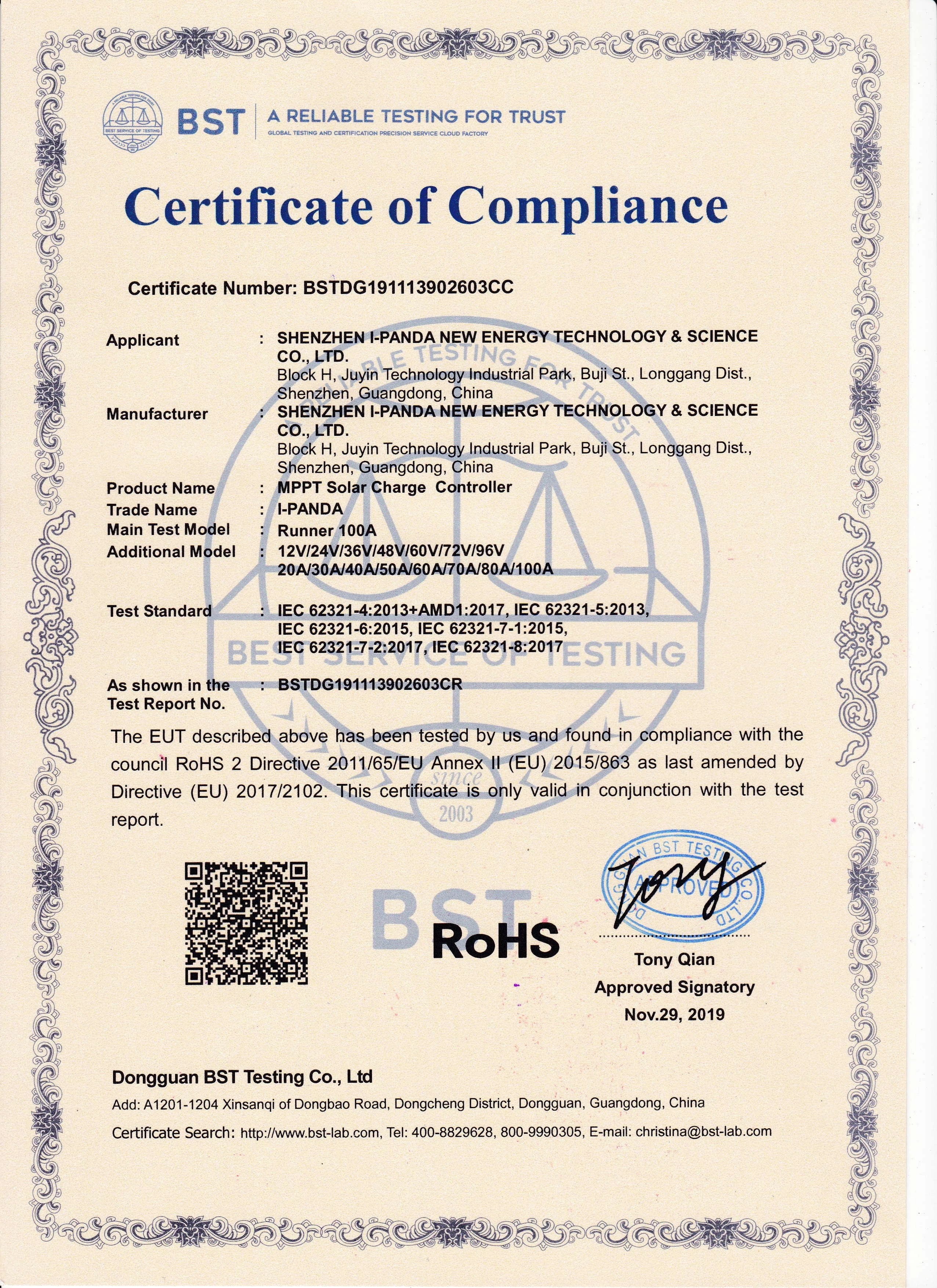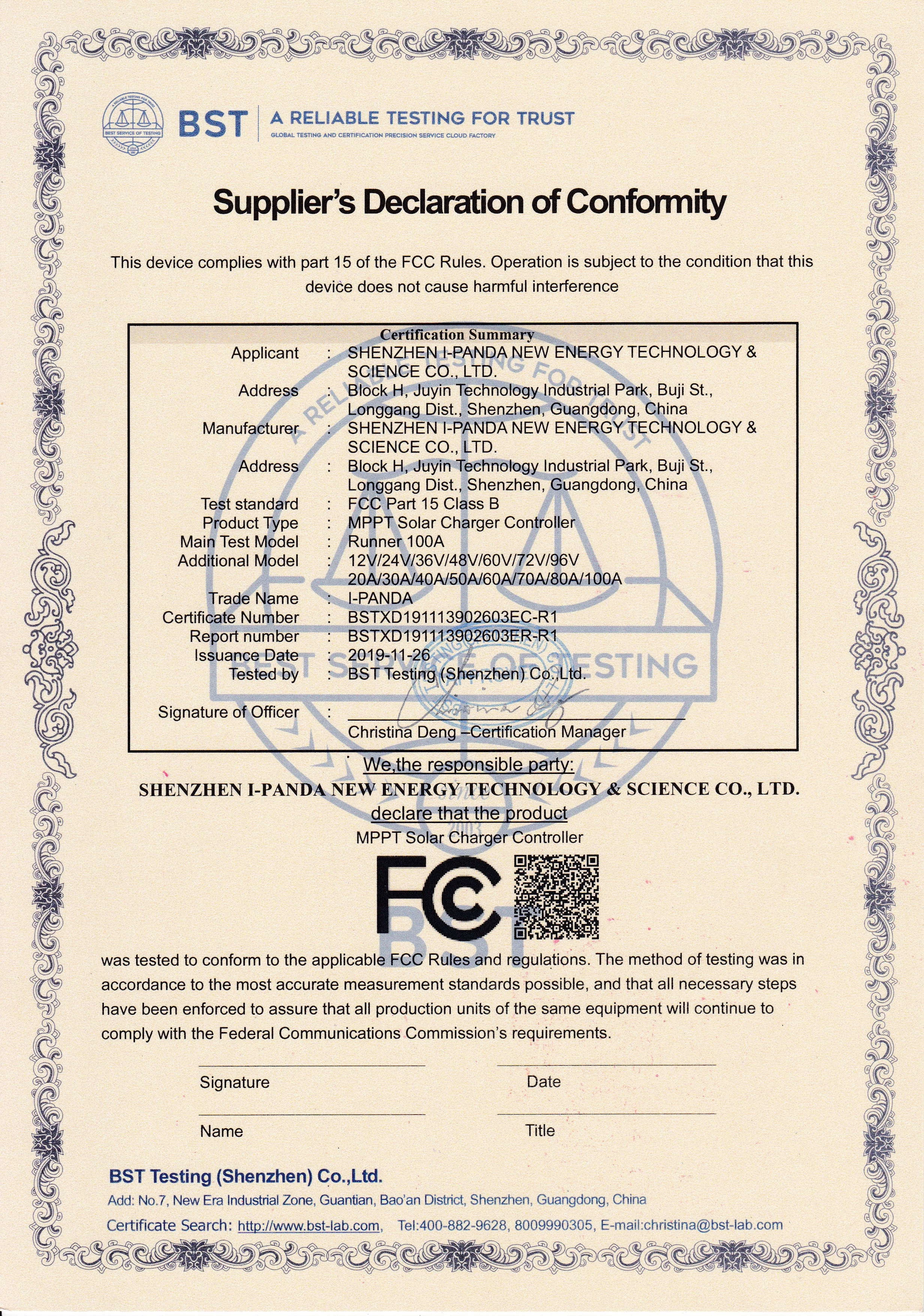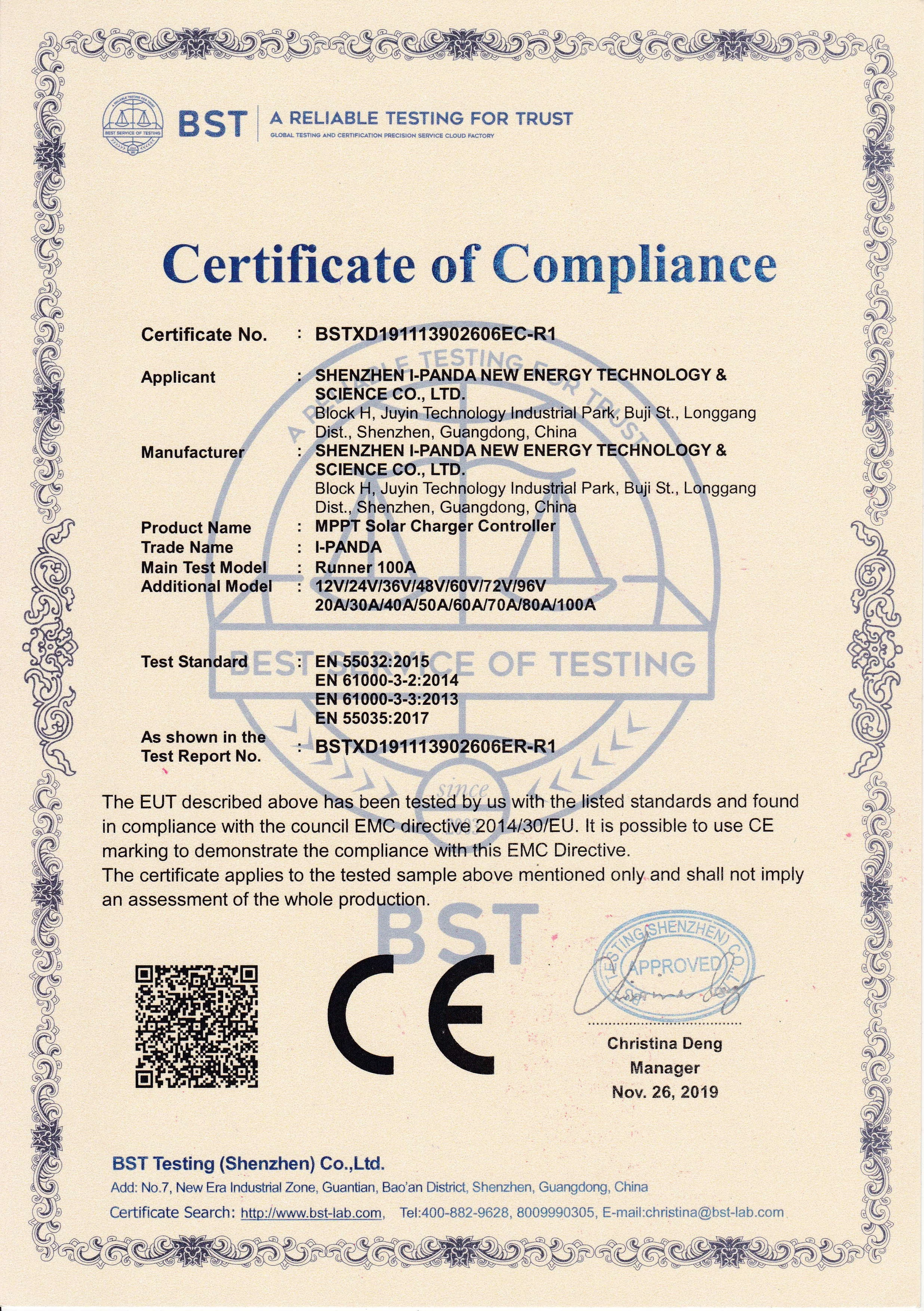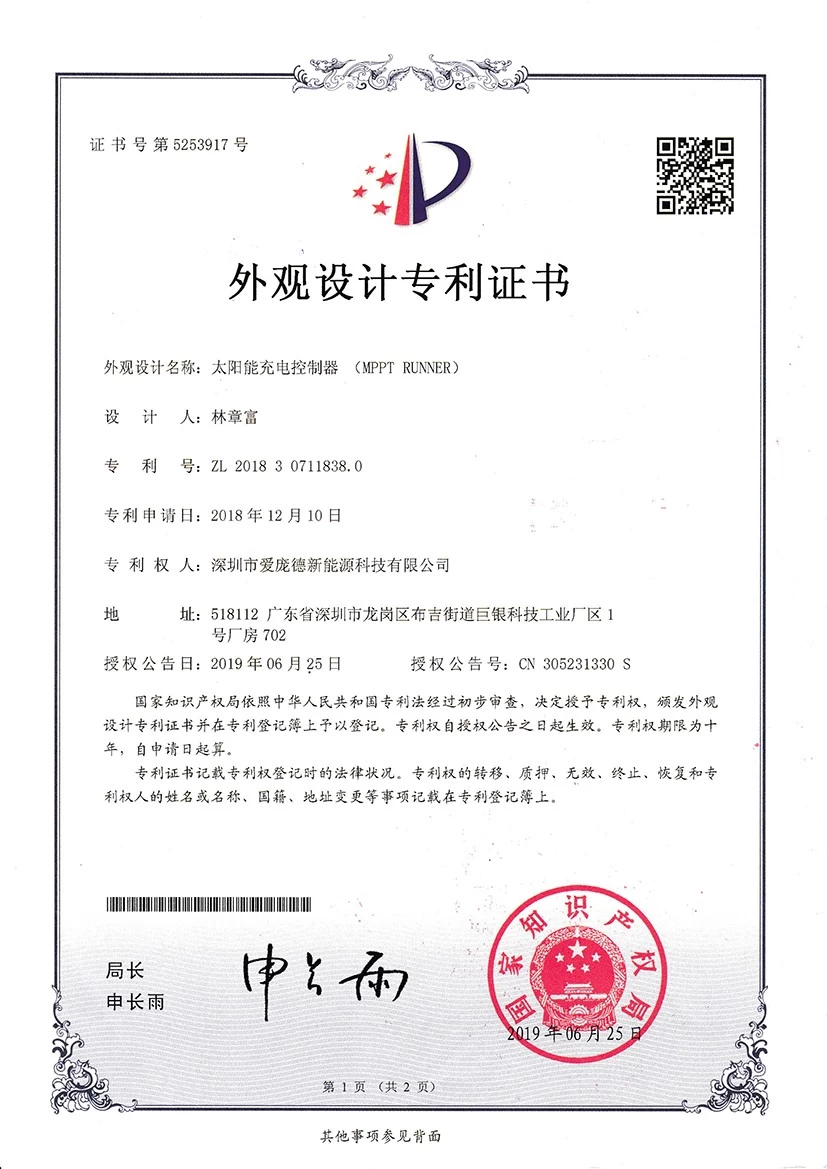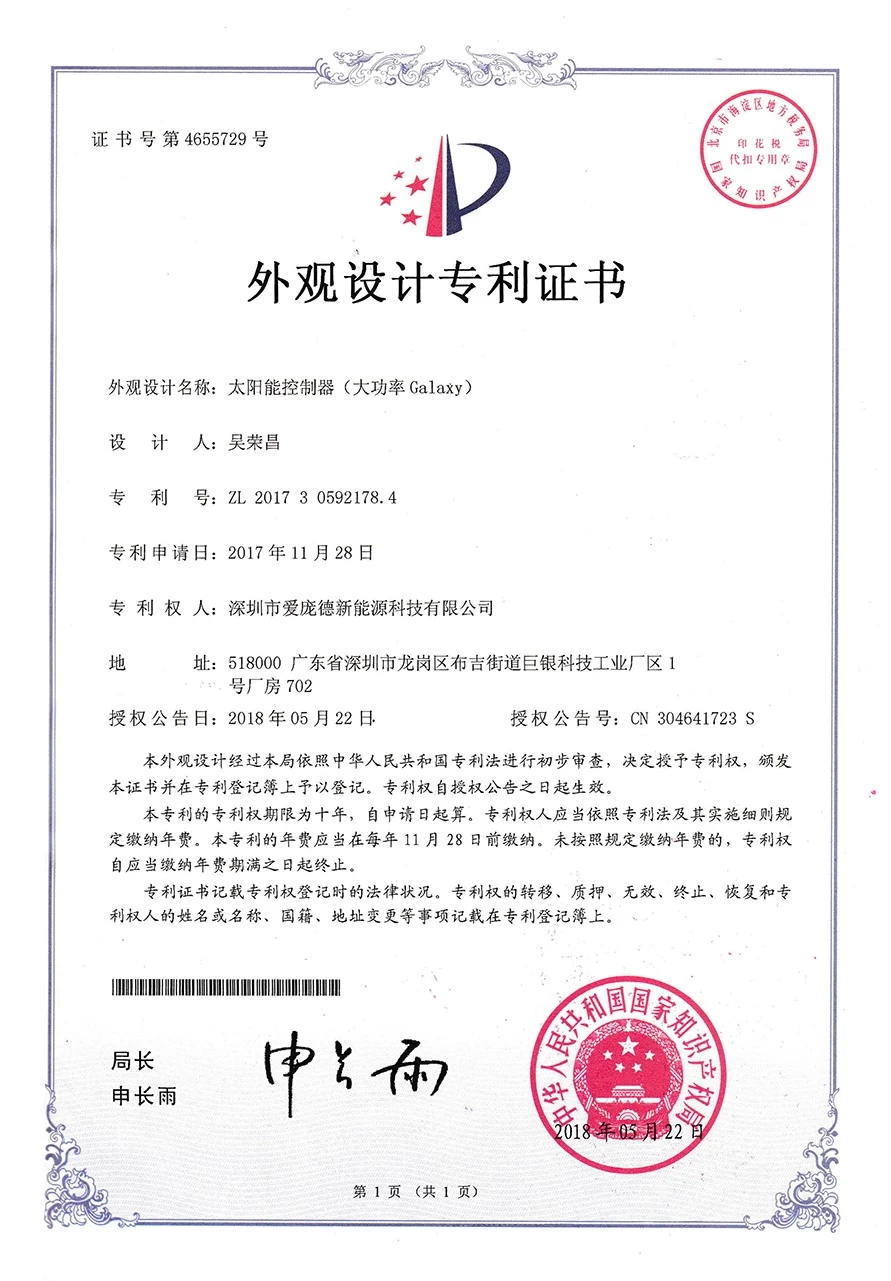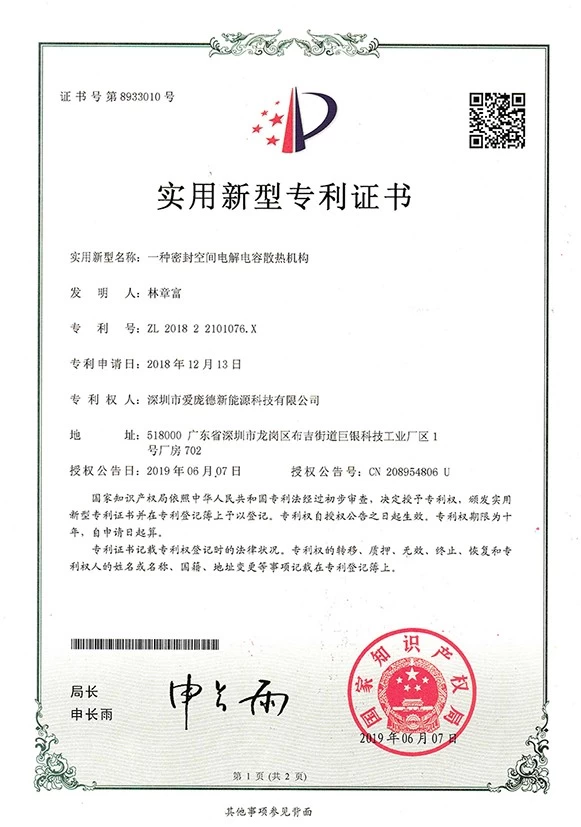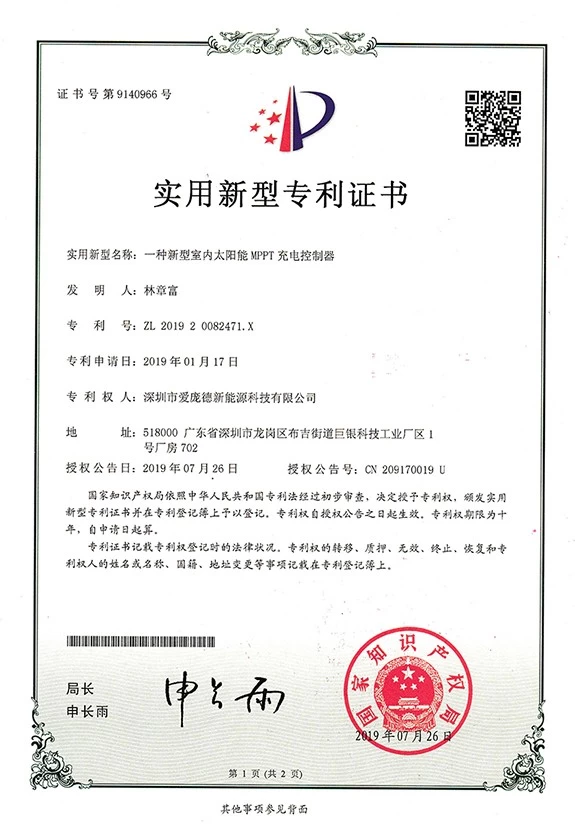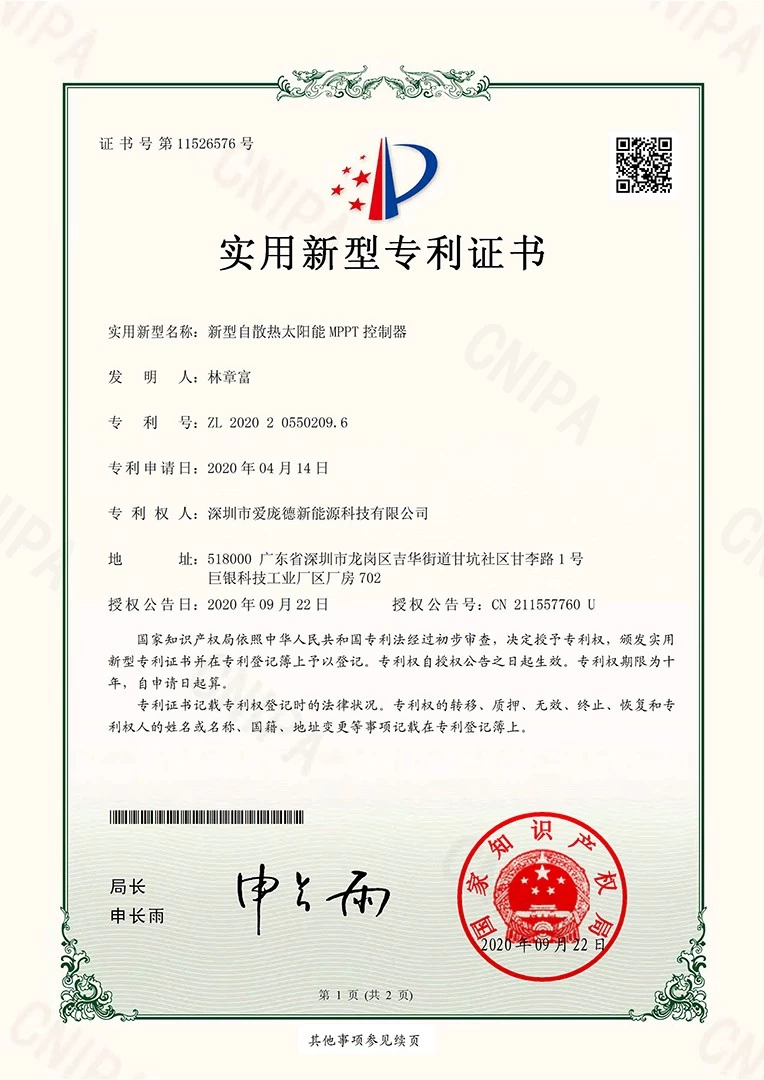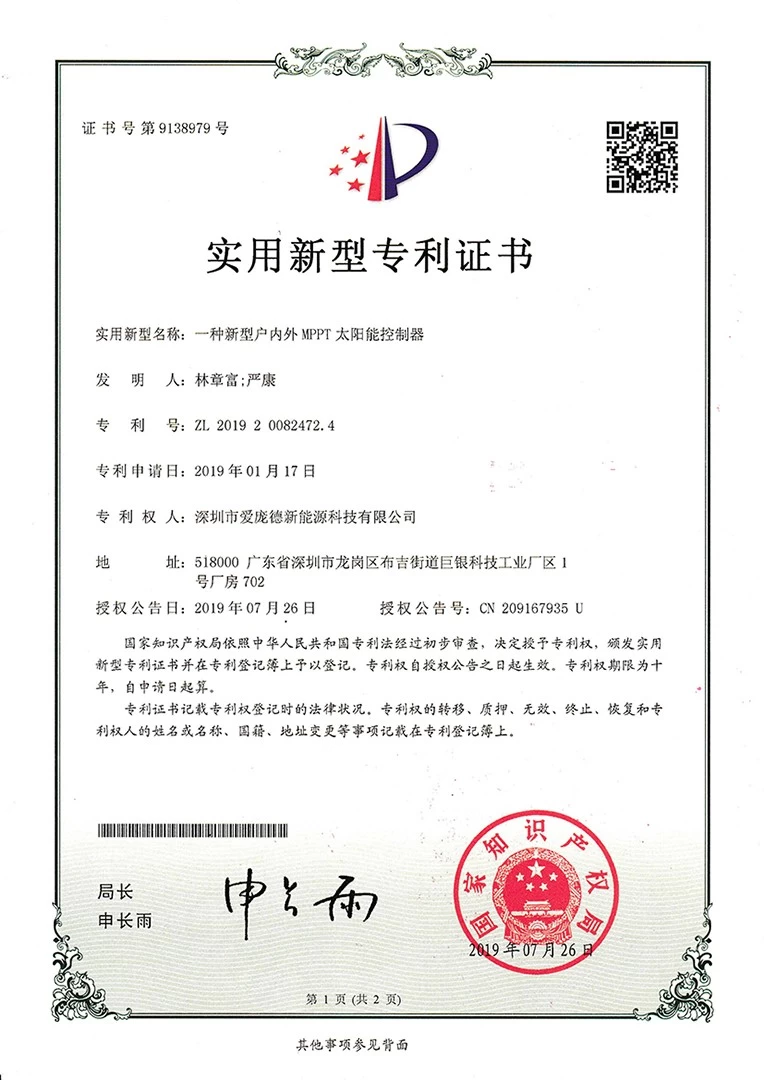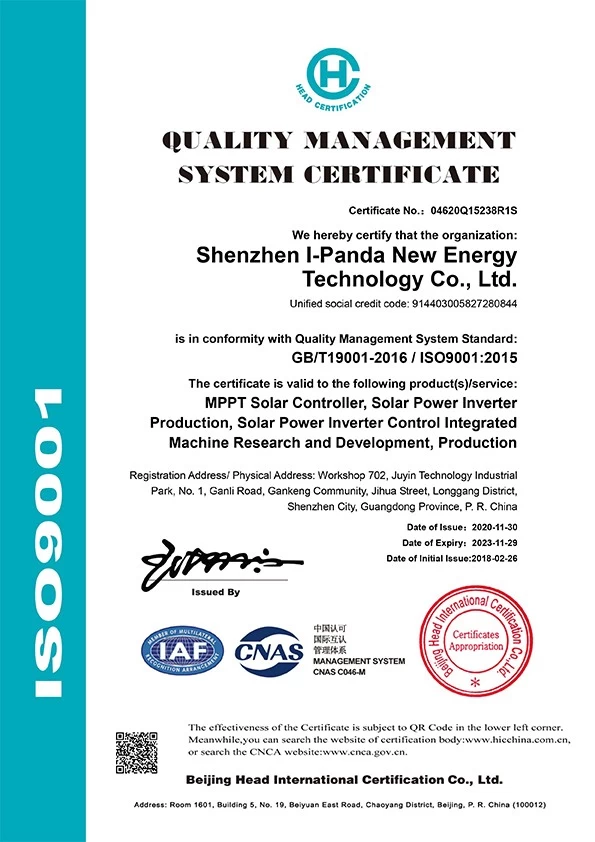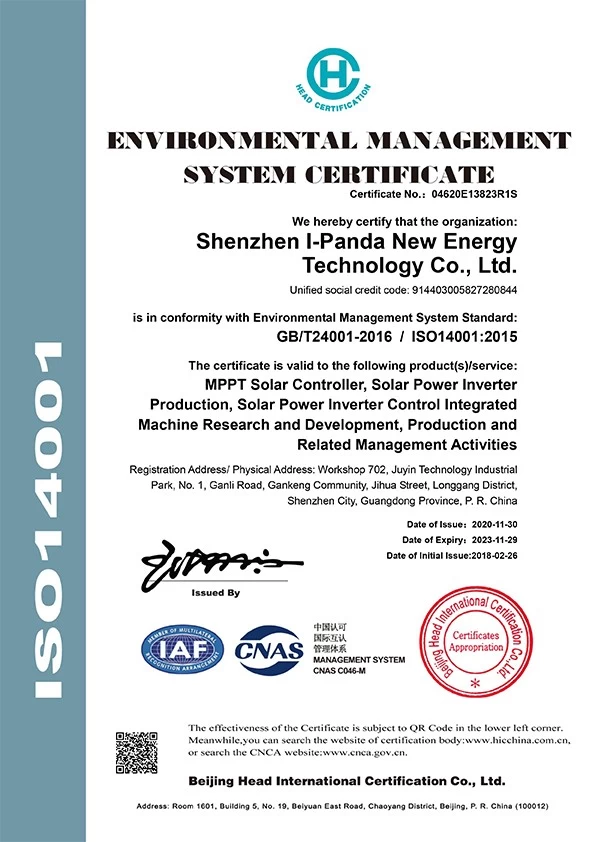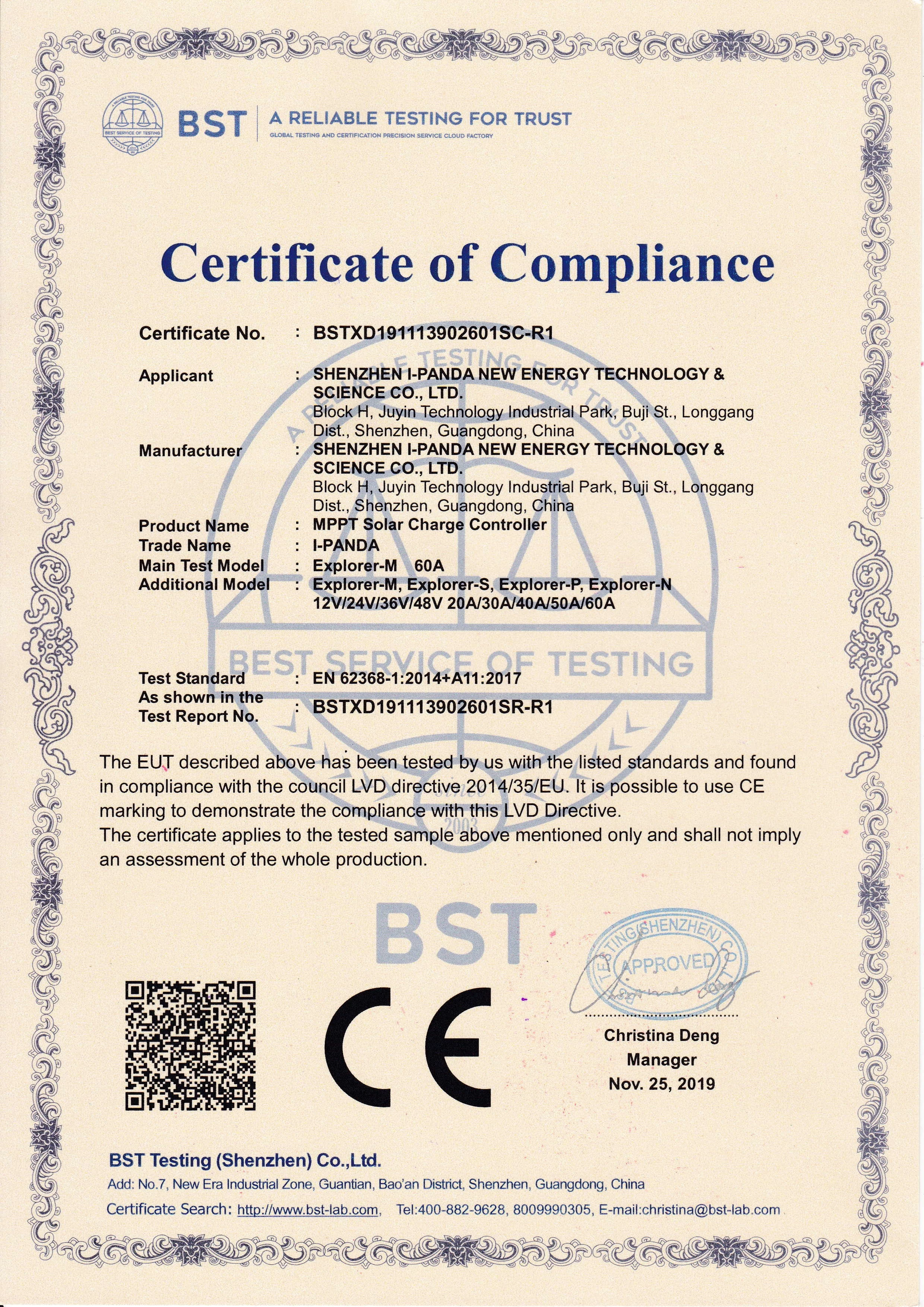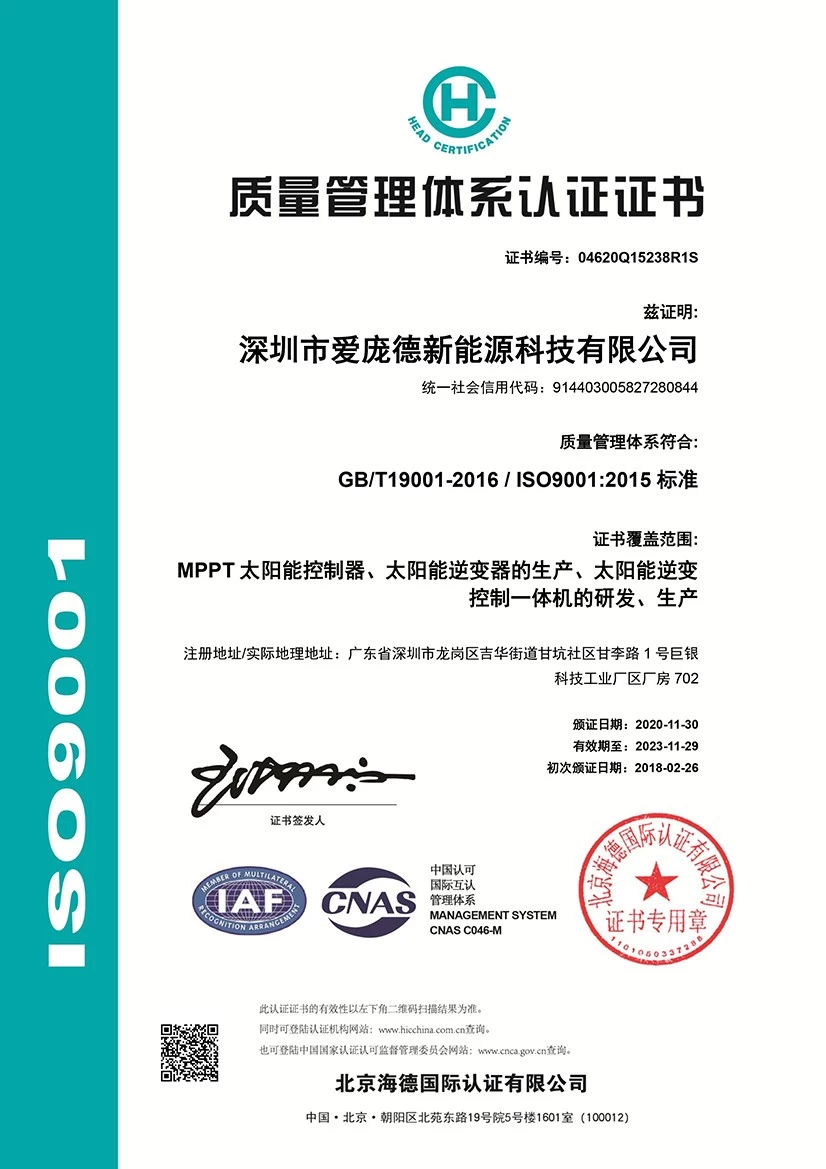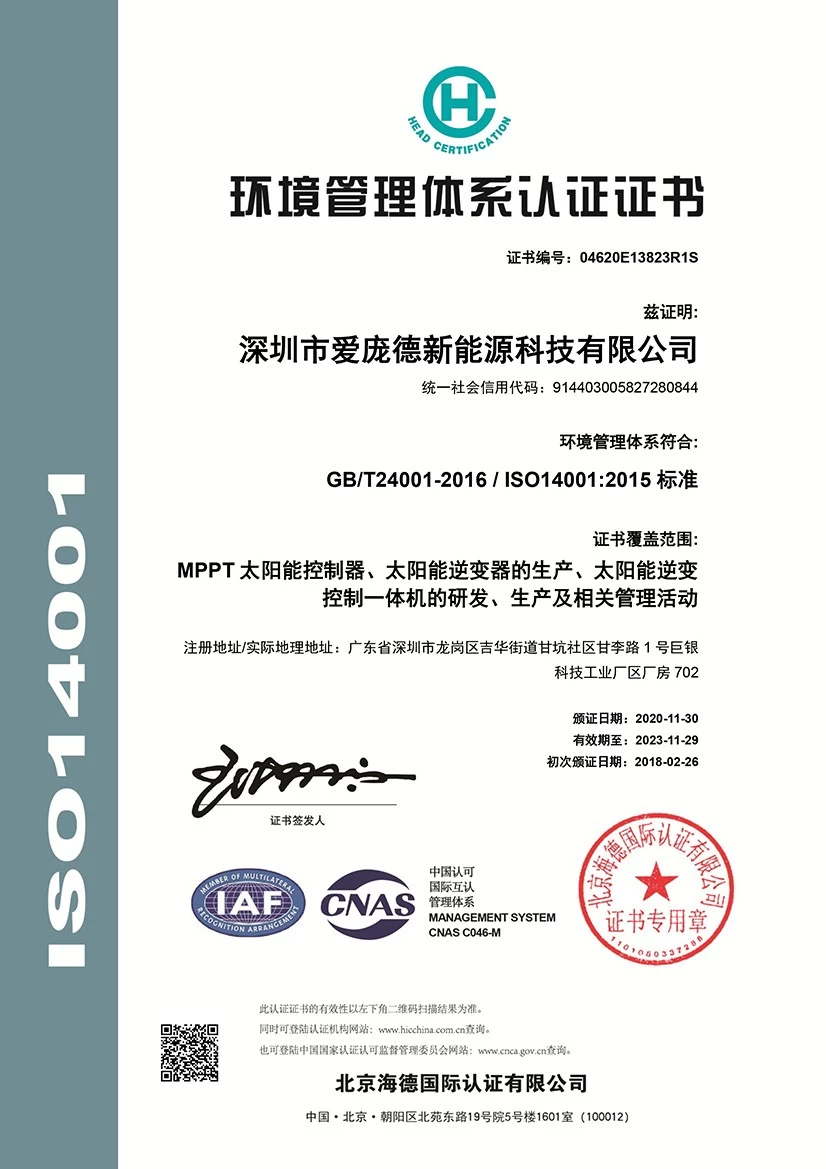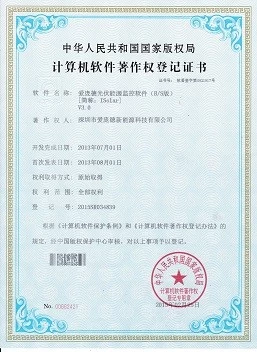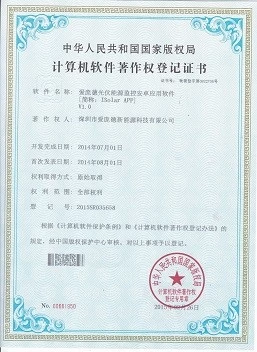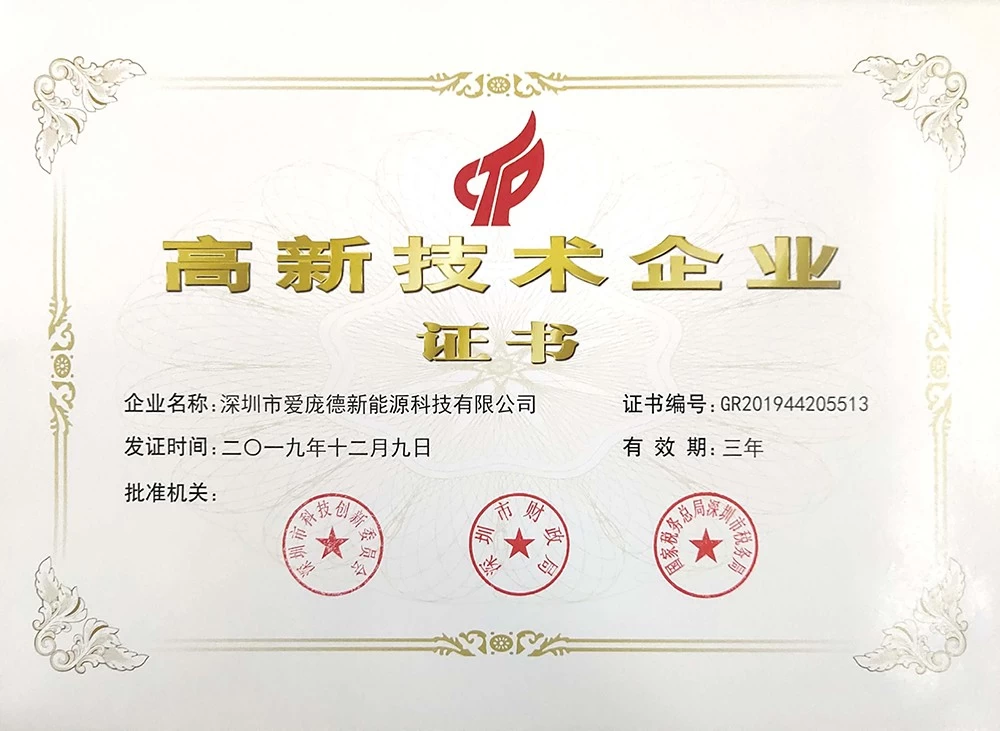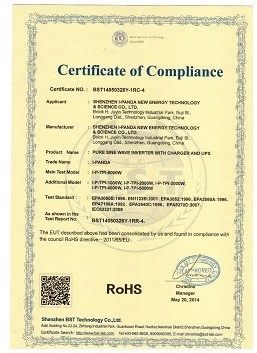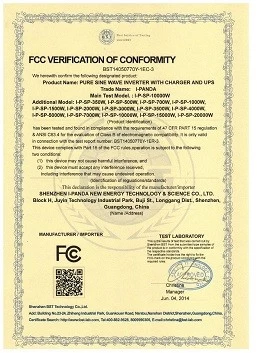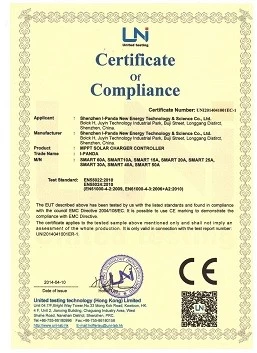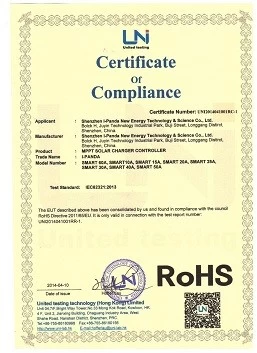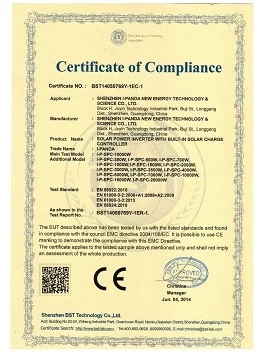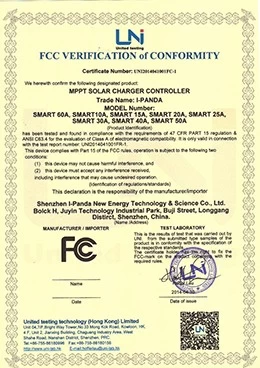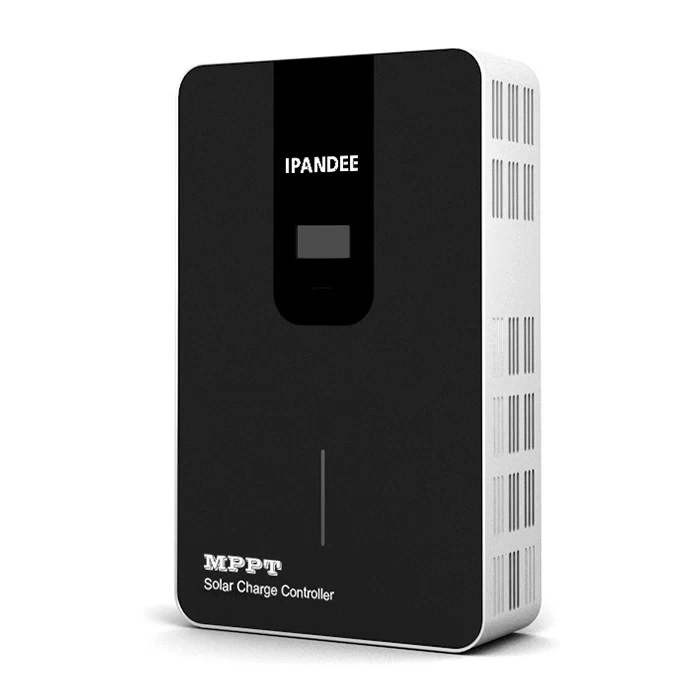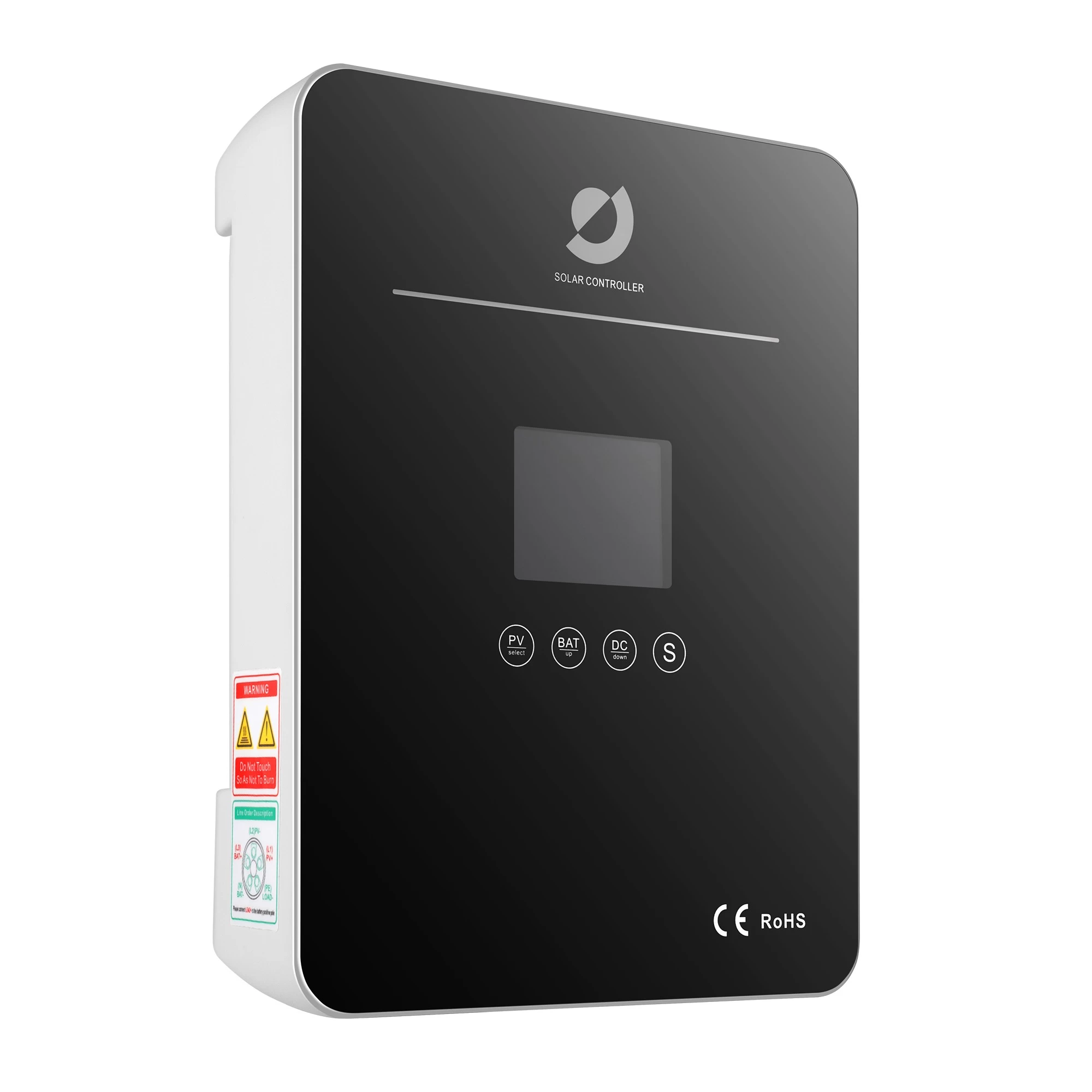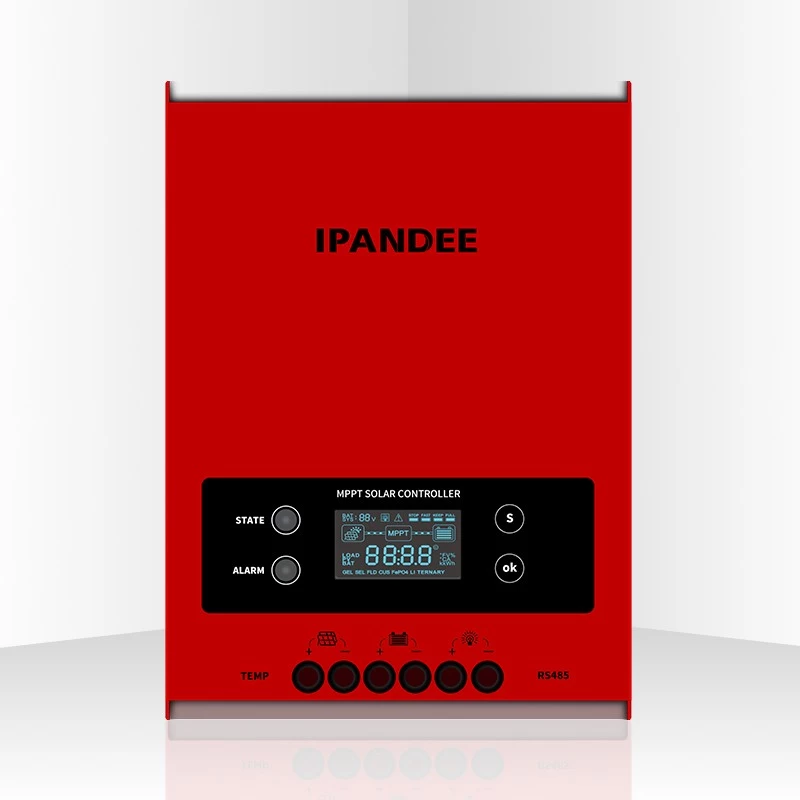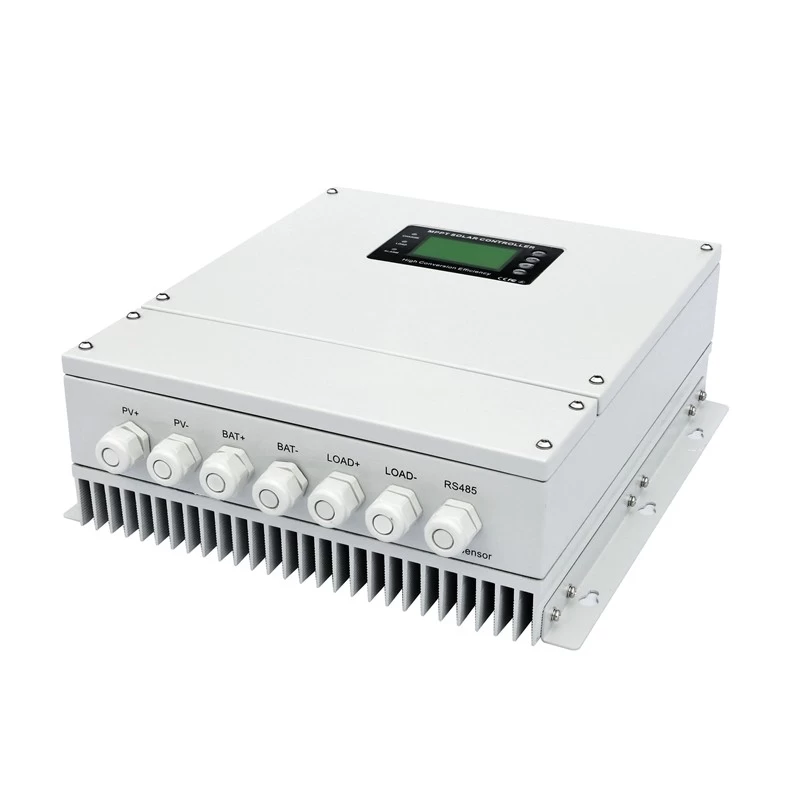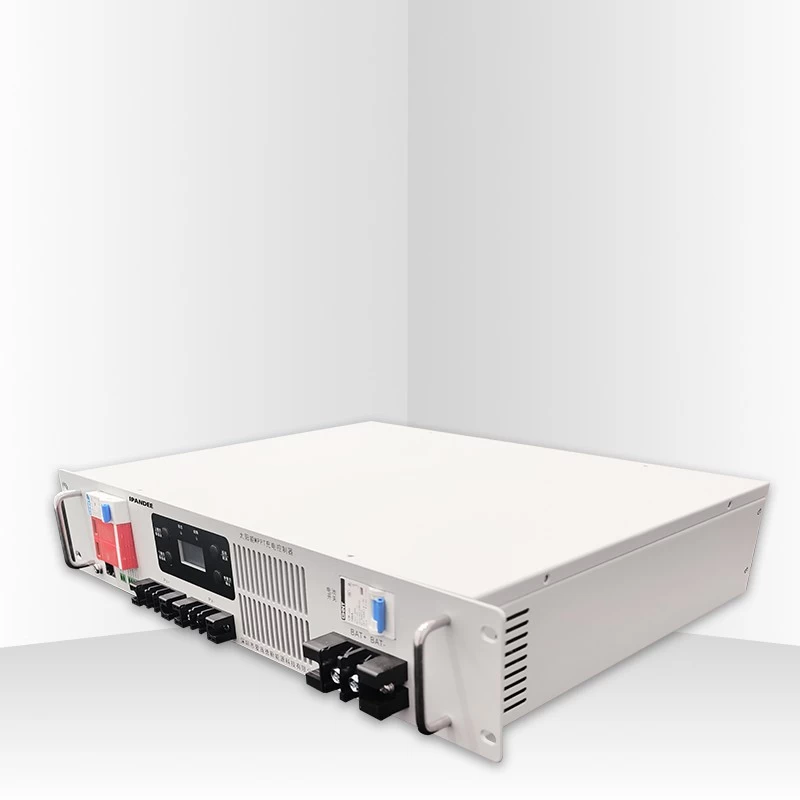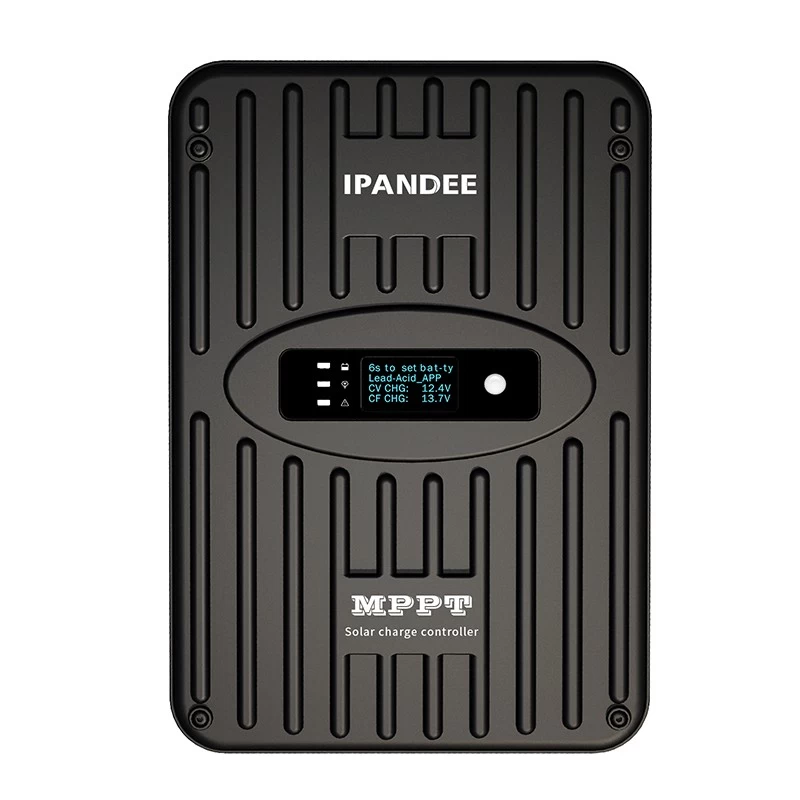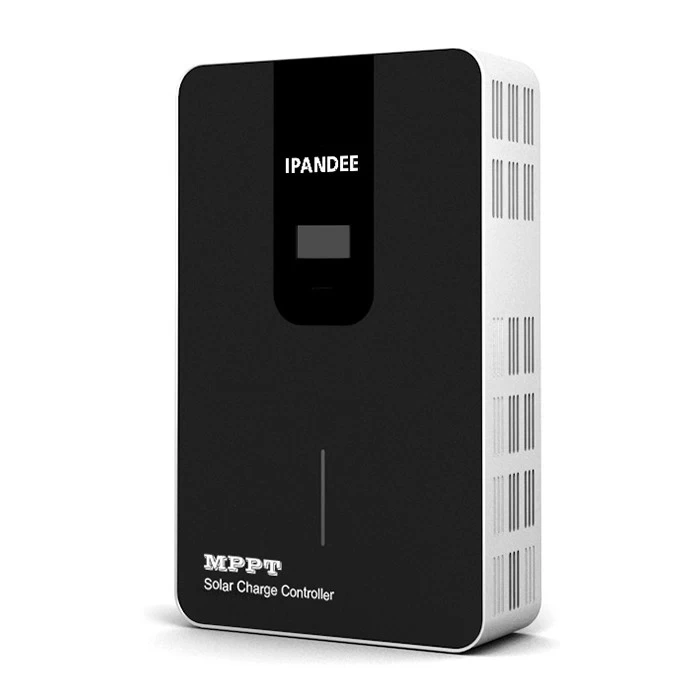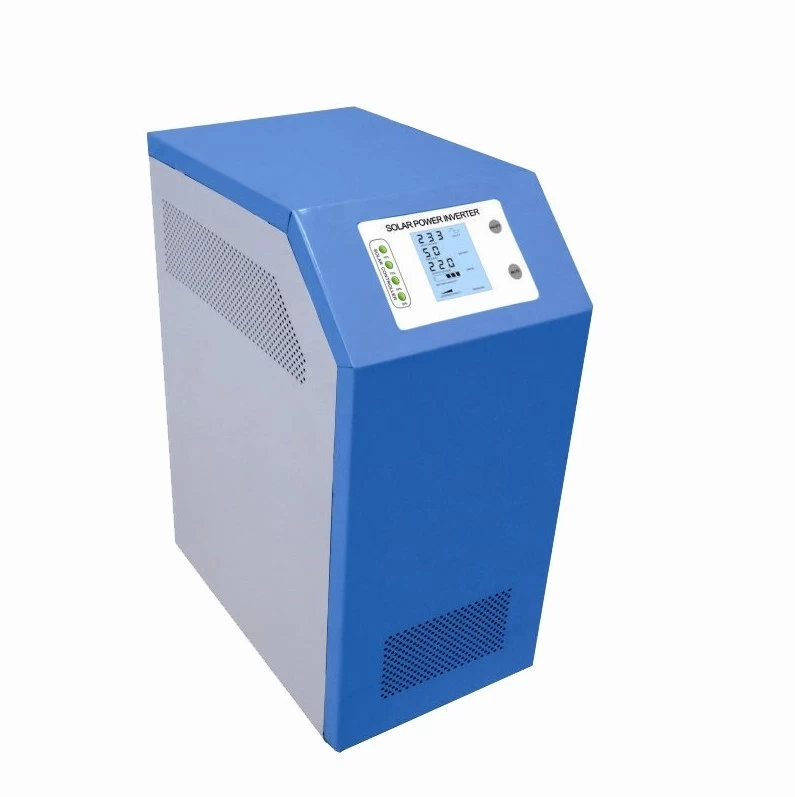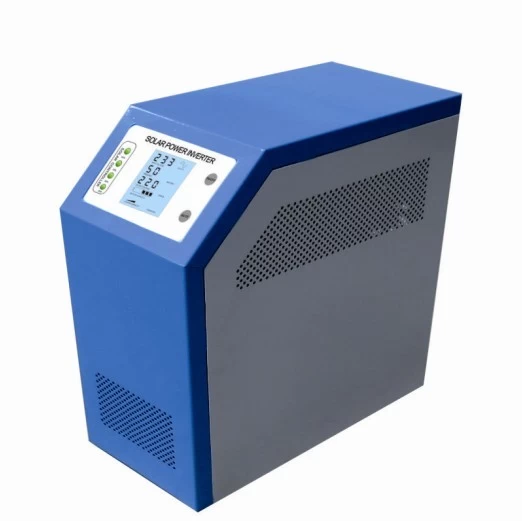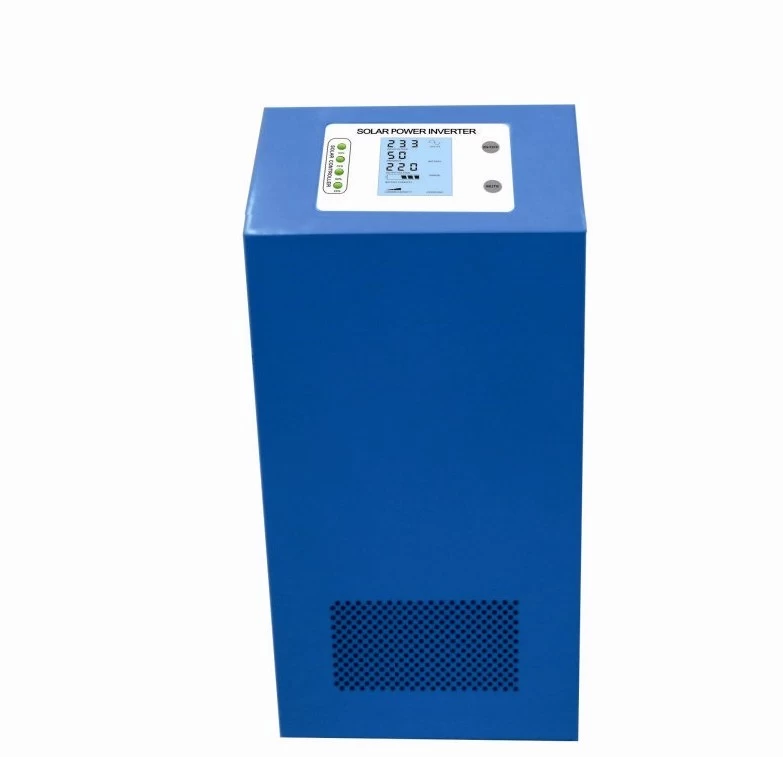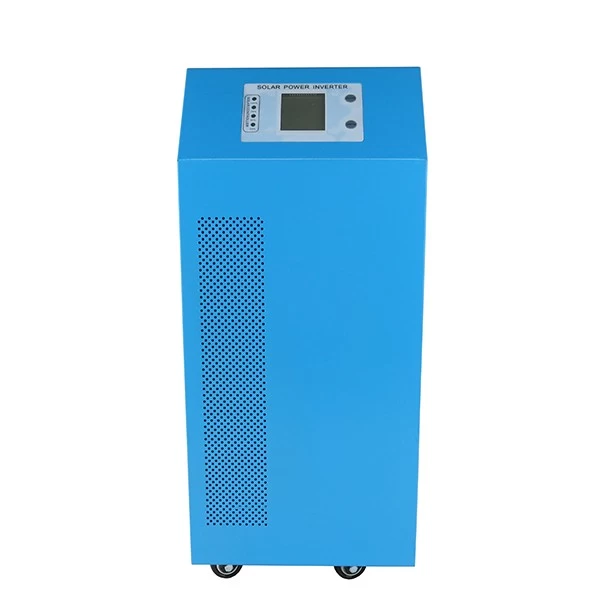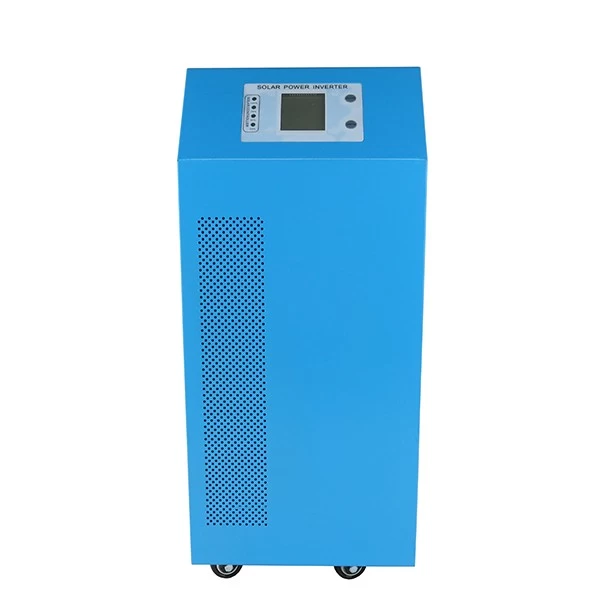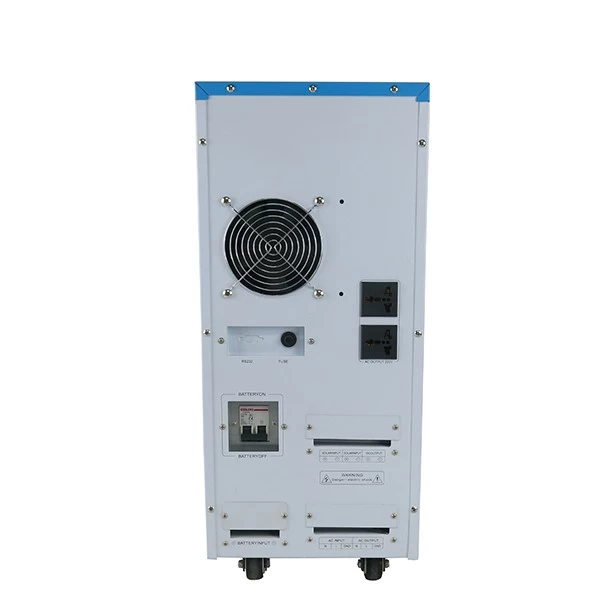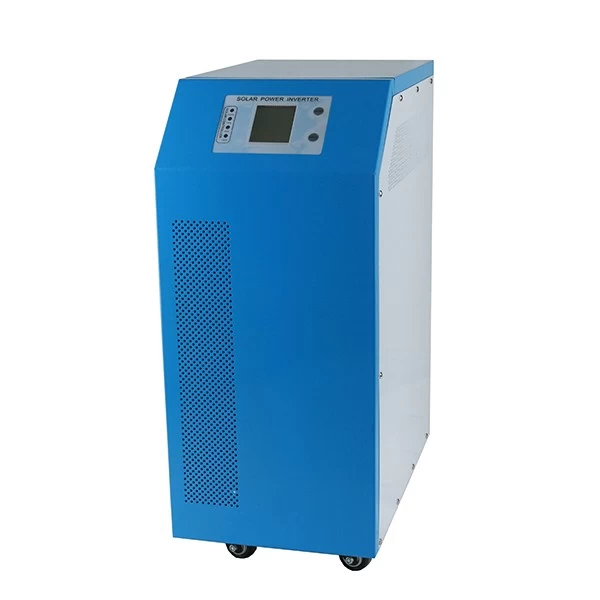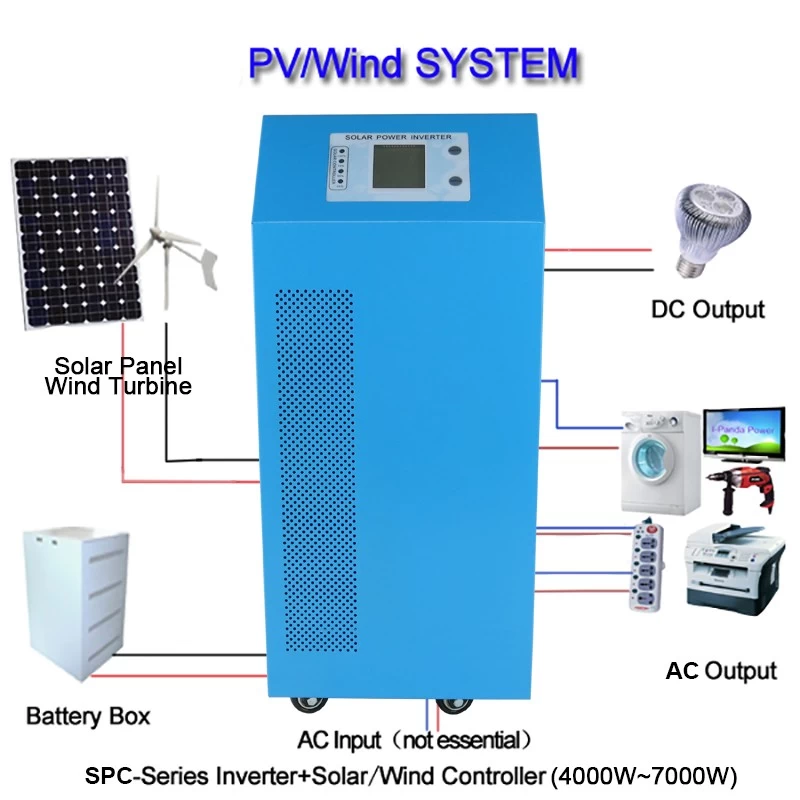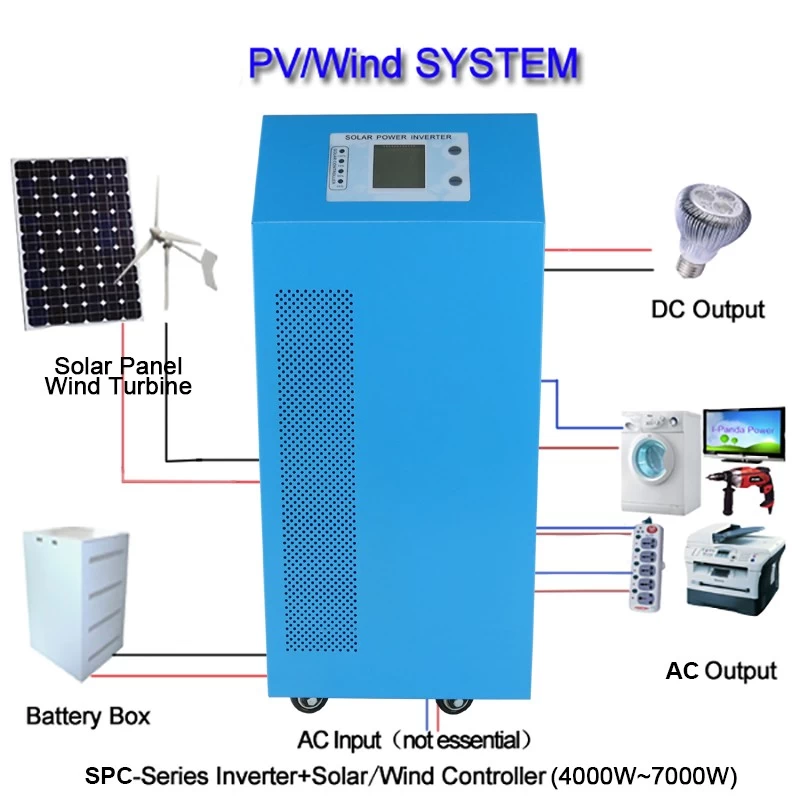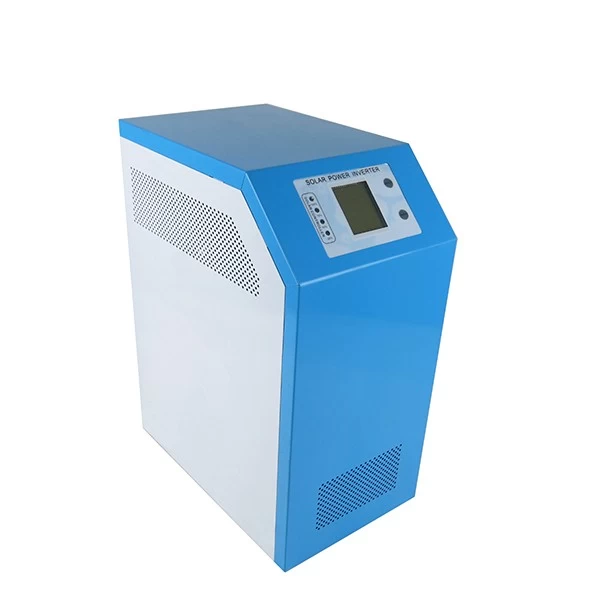- Browse Categories
- EMMPT48 series MPPT solar charge controller
- The Explorer-NS series MPPT solar charge controlle
- MPPT solar charge controller eSmart4
- EXPLORER-M MPPT Solar Smart Digital Controller
- EXPLORER MPPT Solar Smart Digital Controller
- RUNNER MPPT Solar Smart Digital Controller
- GALAXY high power series MPPT solar controller
- MARS outdoor series MPPT solar controller
- eSMART series MPPT solar controller
- MASTER series MPPT solar controller
- Accessories
- (out of product)WISER series MPPT solar controller
- (out of production)Inverter SP Series 350W-20000W
- (Has been removed)
- (out of production)I-Panda SPC Series Inverter
- Certifications
-
- Subscribe
-
Get email updates on new products
- Hot Products
- Contact Us
-
Tel: + 86-755-23091101&+86-755-23091100
Fax: + 86-755-23091102
Information: info@ipandee.com
address: Floor 2, building A2, LiLang Software Park, No. 31, Bulan Road, Nanwan street, Longgang District, Shenzhen
China Post code: 518000 Contact Now
- Follow us
- News
-
-
Why is the inverter starting voltage higher than the minimum voltage?
In the photovoltaic grid-connected inverter, one parameter is strange, that is, the inverter input starting voltage. This voltage is about 30V higher ... -
How to solve the AC inverter overvoltage problem?
just nowPhotovoltaicOn-grid power generation is becoming more and more popular, and ordinary people's homes can see PV power plants in real time. Howe... -
The difference between an improved sine wave and a pure sine wave inverter
This article describes the difference between an improved sine wave and a pure sine wave inverter. ModifiedSine Pure Wave: The most common general pur... -
The world's top ten PV inverter companies
The inverter is also called the power regulator. According to the use of the inverter in the photovoltaic power generation system, it can be divided i... -
Why should the inverter stop working when the grid is out of power?
Some people install a photovoltaic system, they will have a mentality of "even if the power grid is cut off, if there is a sun, and their homes can us... -
What is the difference between MPPT function and solar inverter without MPPT function?
The MPPT controller utilizes maximum power point tracking technology to extract the maximum power from the solar array to charge the battery. The maxi... -
Europe's first waste photovoltaic panel recycling plant
Solar panels have a service life of 20 to 30 years. Along with the mass production of the global solar energy manufacturing industry in the past few y... -
Scientists have discovered that sand can make solar cell silicon materials
According to a report by the Kyodo News Agency on November 6th, visiting professors of the University of Tokyo, Sugawara, and others opened a joint st... -
Domestic energy storage market competition pattern
Energy storage as a new market for many battery manufacturers in China andInverterVendors bring the opportunity to expand new affairs and change the p... -
Portugal will achieve 100% renewable energy supply in 2050
Portugal's Minister of Environment and Energy Transformation João Pedro Matos Fernandes revealed that Portugal will achieve its carbon neutrality tar...
-
The pure sine wave inverter built-in PWM controller I-Panda SPC series
- Introduction
- This type combines the high quality low frequency pure sine wave inverter(with utility charge function and UPS function) and Built-in PWM solar power charge controller.It is often used in Off-grid solar power system,solar power system with utility power as a complementary.Its mode (AC first or DC first) is adjustable,it also has a beautiful appearance.This is I-Panda SPC inverter series.
Features
1) Easy to install.To configure a solar system, customers only need to connect it with solarpanels and batteries.
2)CPU management andcontrol,modulardesign
3)LCD display,can visually displayvarious parameters(such as the output voltage, frequency, working mode, etc)
4)Multifunctiondesign,customersdon’t need to buy solar, controller, charger and stabilizer,etc。
5) External batteryconnection, convenient to expand back-up power time; user can connect as manybatteries as needed according to the local sunlight and wind.
6)With superload-carrying ability and high load capacity, this series of inverters can not only drive resistance load;but also various kinds of inductive loads, such as motor, air conditioner,electric drills, fluorescent lamp, gas lamp, etc. It can drive almost any kindsof load
7)Low frequency puresine wave circuit design, good system stability, easy for maintenance, lowfailure rate and long service life (under proper operation, it may be as longas 5 years)
8) Perfectprotection: low voltage protection, over voltageprotection, overheat protection, short-circuit protection, overloads protection
9) CE / EMC / LVD/RoHS /CCC approvals
10) 2 years warranty,life-long technical supports
Function
1. Soleinversion function under inversion mode(only connected to battery),can be setto normal working mode and sleep mode
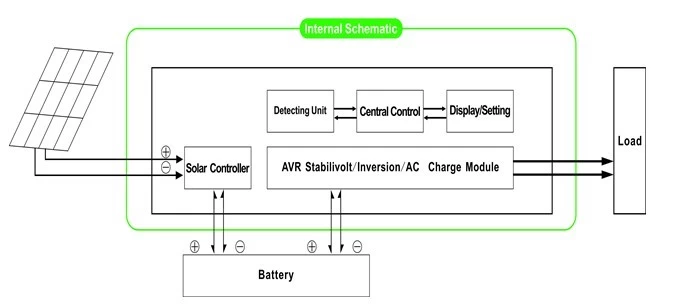
1.1 Normal workingmode:FREQUENCY in the LCD display is set as 01. No matter whetherthere are AC loads connected to the inverter or not, the inverter’s output terminal will always havevoltage ready to supply power to the loads. Under this mode, the LCD will bedisplayed as bellow:

1.2 Sleep mode:FREQUENCY inthe LCD display is set as 02. If the power of the loads that connected to theinverter is lower than 5% of the inverter’s rated power, there will be no output from the inverter.That is to say, only the chip of inverter is working under such condition andthe power consumption is only 1-6W; If the power of the loads that connected tothe inverter is higher than 5% of the inverter’s rated power, then the inverter will automatically startthe inversion function and supply power to the loads within 5s. As shown below:
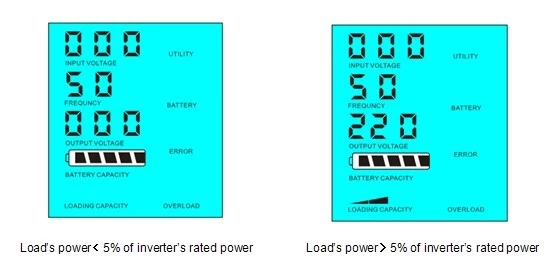
System introduction under this mode:
1) Only the solar panel charges thebattery
2) Independent sole off-grid solarpower system; suitable for areas that are lack of utility or have rich solar energy
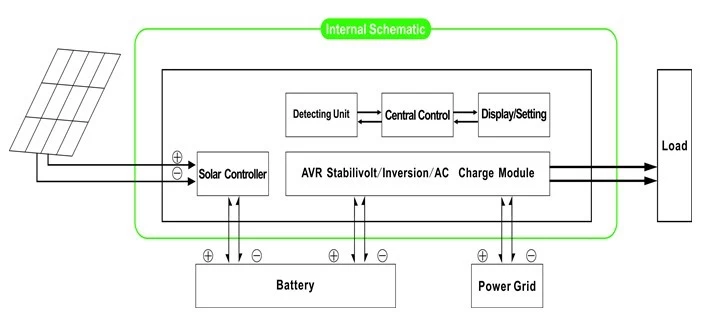
2. UPS function under utility mode(connected tobattery and utility .Can be set as utility first, battery standby mode and battery first, utility standby mode.
2.1. Utility first,battery standby UPS mode: FREQUENCY in the LCD display is set as 01. Whenboth utility and battery are connected to the inverter, utility willsupply power to the loads prior to the battery. When utility is cut off, thebattery will automatically continue to supply power after inversion.
Steps are asfollows:
Step 1: When utility power is available, itwill output directly after voltage being stabilized and charge batteries at thesame time.
Step 2: Whenutility power is cut off suddenly, the inverter will convert DC power to ACpower automatically to ensure uninterrupted power supply within 5ms.
Step 3: Whenutility power becomes available again, it will automatically transfer toutility supplying power to loads and charge batteries at the same time.
See Workflowas below:
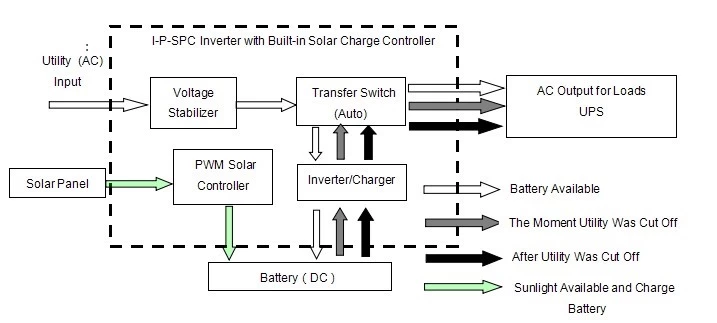
LCDdisplayed as bellow:
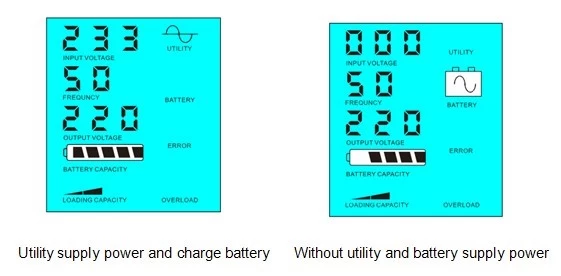
System introduction under this mode:
1) There are 2 ways to charge thebattery, utility and solar panel
2) This system is suitable for powersystems built in areas lacking utility or power systems that frequently used inareas with/without utility
2.2.Battery first, utility standby UPS mode: FREQUENCY in the LCD display is set as03. When both utility and battery areconnected to the inverter, battery will supply power to the loads prior toutility. When battery capacity is not enough, utility will continue to supplypower automatically.
Stepsare as follows:
Step 1: When battery hasenough power, it will supply power to the loads directly
Step2: When battery does not have enough power, it will automatically transfer toutility supplying power to the loads
Step 3: After thebattery is fully charged (e.g. by solar or wind charge controller), it willthen automatically transfer to battery supplying power to the loads.
See Workflowas below:
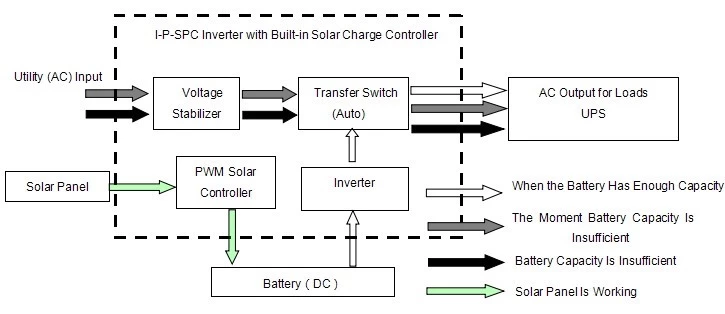
LCDdisplayed as bellow:
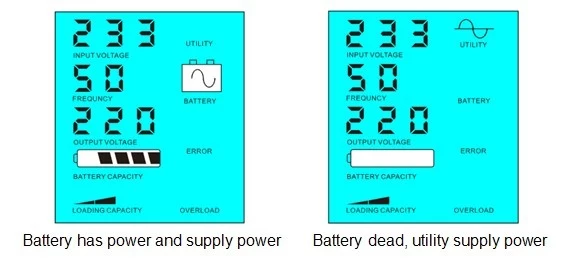
System introduction under this mode:
1)There is only way to charge the battery: solar panel
2) This system is suitable for areas where electricity isexpensive and environmental areas where solar power can be fully used to saveutiliypower, such as family solar&wind system and streetlightsolar&wind system
Parameter
|
Model Parameter |
500VA |
700VA |
1000VA |
1500VA |
2000VA |
3000VA |
4000VA |
|||||||
|
Rated Output Capacity |
350W |
500W |
700W |
1000W |
1500W |
2000W |
3000W |
|||||||
|
Peak Power |
700W |
1000W |
1500W |
2000W |
3000W |
4000W |
6000W |
|||||||
|
Battery Voltage(DC)) |
12V or 24V |
24V |
24V or 48V |
|||||||||||
|
PWM Solar Controller |
Voltage |
12V or 24V |
24V |
24V or 48V |
||||||||||
|
Current |
10A |
20A |
20A |
30A |
40A |
|||||||||
|
PV Max Input Voltage |
12V System:25V |
50V |
24V System:50V |
|||||||||||
|
Size W×D×H(mm) |
335*165*375 |
350*220*460 |
||||||||||||
|
Packing Size W×D×H(mm) |
355*185*395 |
370*240*480 |
||||||||||||
|
Net Weight (kg) |
7 |
8 |
12 |
14 |
20 |
23 |
29 |
|||||||
|
Gross Weight (kg) |
8 |
9 |
13 |
16 |
22 |
25 |
31 |
|||||||
|
|
||||||||||||||
|
Model |
5000VA |
6000VA |
7000VA |
10kVA |
15kVA |
20kVA |
30kVA |
|||||||
|
Rated Output Capacity |
3500W |
4000W |
5000W |
7000W |
10000W |
15000W |
20000W |
|||||||
|
Peak Power |
7000W |
8000W |
10000W |
14000W |
20000W |
30000W |
40000W |
|||||||
|
Battery Voltage(DC) |
48V |
96V |
192V |
|||||||||||
|
PWM Solar Controller |
Voltage |
48V |
96V |
192V |
||||||||||
|
Current |
50A |
60A |
50A |
50A |
||||||||||
|
PV Max Input Voltage |
100V |
200V |
400V |
|||||||||||
|
Size W×D×H(mm) |
420*260*605 |
420*280*625 |
||||||||||||
|
Packing Size W×D×H(mm) |
440*280*625 |
440*300*645 |
||||||||||||
|
Net Weight (kg) |
31 |
50 |
50 |
55 |
85 |
105 |
125 |
|||||||
|
Gross Weight (kg) |
33 |
55 |
60 |
65 |
95 |
115 |
135 |
|||||||
|
General Parameter |
||||||||||||||
|
Working mode (setting) |
01 |
Utility First, Battery Standby |
||||||||||||
|
02 |
Sleep Mode,no utility,load’s power higher than 5% of rated power, start to work automatically |
|||||||||||||
|
03 |
Battery first, utility standby |
|||||||||||||
|
AC Input |
Voltage |
220V±35% or 110V+35%(Optional) |
||||||||||||
|
Frequency |
50Hz±3% or 60Hz±3% (Optional) |
|||||||||||||
|
AC Output |
Voltage |
220V±3% or 230V±3 or240V±3% or 100V±3% |
||||||||||||
|
Frequency |
50Hz±0.5 or 60Hz±0.5 (Optional) |
|||||||||||||
|
Utility charge |
AC Charge Current |
0~15A |
||||||||||||
|
Charge Time |
Depend on battery capacity and quantity |
|||||||||||||
|
Battery Protection |
Automatic detection, Charge and discharge protection,Intelligent Management |
|||||||||||||
|
PV Charge |
Total Current of PV Input Should Be Less Than Rated Current |
|||||||||||||
|
Display |
Display Mode |
LCD+LED |
||||||||||||
|
Display Information |
Input voltage,output voltage,output frequency,battery capacity,Load condition,Status Information |
|||||||||||||
|
Output Wave Type |
Pure sine wave output,waveform distortion rate≤3 |
|||||||||||||
|
Overload Ability |
>120% 1 min,>130% 10s |
|||||||||||||
|
Power Consumption |
Sleep Mode |
1~6W |
||||||||||||
|
Normal Mode |
1~3A |
|||||||||||||
|
Conversion Efficiency |
80%~90% |
|||||||||||||
|
Transfer Time |
<5ms (AC to DC / DC to AC) |
|||||||||||||
|
Protection |
Overload output,short-circuit,high-voltage input,low-voltage input,overheat |
|||||||||||||
|
Environment |
Temperature |
-10℃~50℃ |
||||||||||||
|
Humidity |
10%~90% |
|||||||||||||
|
Altitude |
≤4000m |
|||||||||||||
- The above parameters with “or” means that the parameter needs to do factory settings as per customer’s preference.
- We have our own professional inverter controller and UPS R&D team and we provide technical support and OEM service.
- The controller information above is our company’s standard parameter can be changed according to customer’s requirement.
ConnectionDiagram
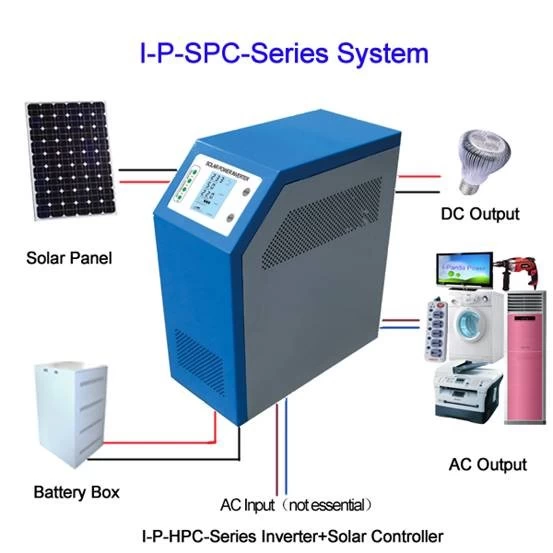
Others
Pleaserefer to the outline design, technical documents, product brochures, etc.
Madeby Engineering Department, May 5, 2014, 1st Edition
Tel:+86-15002089033
Contact Person:Henry Feng
PDF Show:PDF





